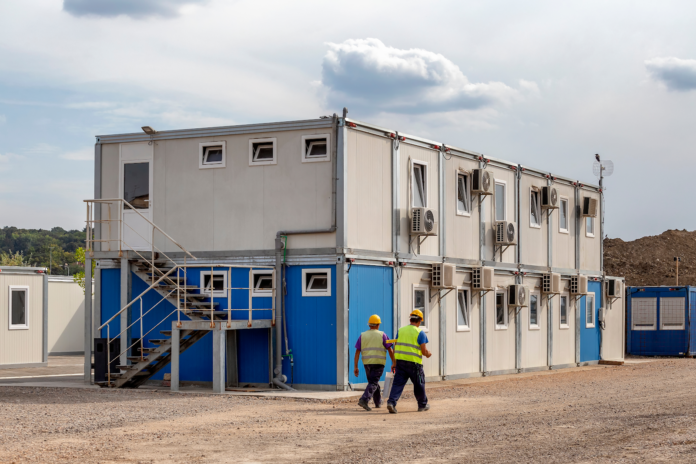If you’re a construction business owner, then you know that job trailers are a must-have. They allow you to transport equipment and materials to the job site, and they help keep your work area organized and efficient. In this blog post, we will discuss the different types of job trailers that are available on the market today, and we will help you decide which one is right for your business!
When it comes to job trailers, there are three main types that you can choose from drop-deck trailers, gooseneck trailers, and bumper pull trailers. Each type has its own set of benefits and drawbacks, so it’s important to select the right one for your specific needs.
Drop-Deck Trailers
Drop-deck trailers are a great option for businesses that need to transport heavy equipment or materials. They feature a low deck height, which makes loading and unloading easier.
These are helpful to businesses that transport large, bulky, or oddly shaped items. The benefit of using this trailer is that the items will not move around as much during transport, which can help prevent damage. However, they are not as good for transporting smaller items, and they can be difficult to maneuver in tight spaces.
They are not as maneuverable as other types of job trailers, so they may not be ideal for construction sites that have tight spaces.
A drawback of using this type of trailer is that it can be difficult to see over the sides when backing up. There’s also a chance that the items you’re transporting could shift during transit, which can cause damage.
Maintenance for a trailer like this involves regularly checking the brakes and tires, as well as the suspension. Be careful of the terrain you’re driving on, as drop-deck trailers can be susceptible to damage from sharp objects.
The best type of materials to transport in this trailer are construction equipment like excavators and bulldozers.
Bumper Pull Trailers
Bumper pull trailers are a great option for businesses that need a versatile trailer that can be used for both light and heavy loads. They are easy to maneuver, and they come in a variety of sizes to accommodate different types of loads. The benefits of using a trailer like this are that it is affordable and easy to use.
However, they are not as durable as other types of trailers, so they may not be ideal for businesses that transport heavy items. They are also not as good for transporting large items, since the trailer can become top-heavy when loaded.
They also do not have as much capacity as other types of job trailers, so they may not be suitable for businesses that need to transport large quantities of materials or equipment.
Caring for this kind of trailer is relatively simple, as long as you regularly check the brakes and tires. You’ll also want to make sure that the hitch is secure before each use.
This type of trailer is best for businesses that need to transport small or medium-sized loads. Some examples of materials that can be transported in this type of trailer are building equipment like saws, drills, and hammers, as well as landscaping materials like rocks, mulch, and dirt.
Gooseneck Trailers
Gooseneck trailers are a good choice for businesses that need to transport large loads. They have a higher deck height than drop-deck trailers, which makes them more maneuverable. These trailers are great for businesses that need to transport large items, such as construction equipment or lumber.
The downside of using this type of trailer is that it can be difficult to maneuver in tight spaces. They are also more expensive than other types of trailers.
Maintenance is fairly similar to the other trailers, checking the brakes and tires on a regular basis.
This type of trailer is best for businesses that need to transport large loads of lumber and other building materials like bricks and concrete.
Transporting Trailers
When transporting a trailer, it is important to consider the load you will be carrying and the terrain you will be driving on. Make sure that the trailer is compatible with your vehicle, and always use caution when reversing.
You may need a forklift trailer mover in order to move a trailer around your construction site or transfer the trailer to another job site.
It is also important to check the weight of the load against the capacity of the trailer. Overloading a trailer can cause damage to both the trailer and the vehicle.
Be sure to drive at a safe speed when using a trailer, especially while negotiating curves or hills. When possible, try to avoid sharp objects like rocks or tree stumps, which can damage the trailer.
If you’re not familiar with how to tow a trailer, be sure to practice before heading out on long trips. This will help ensure that both the trailer and the vehicle are operated safely.
There are a variety of types of job trailers available on the market, so it is important to consider what type of trailers will best suit your needs.






